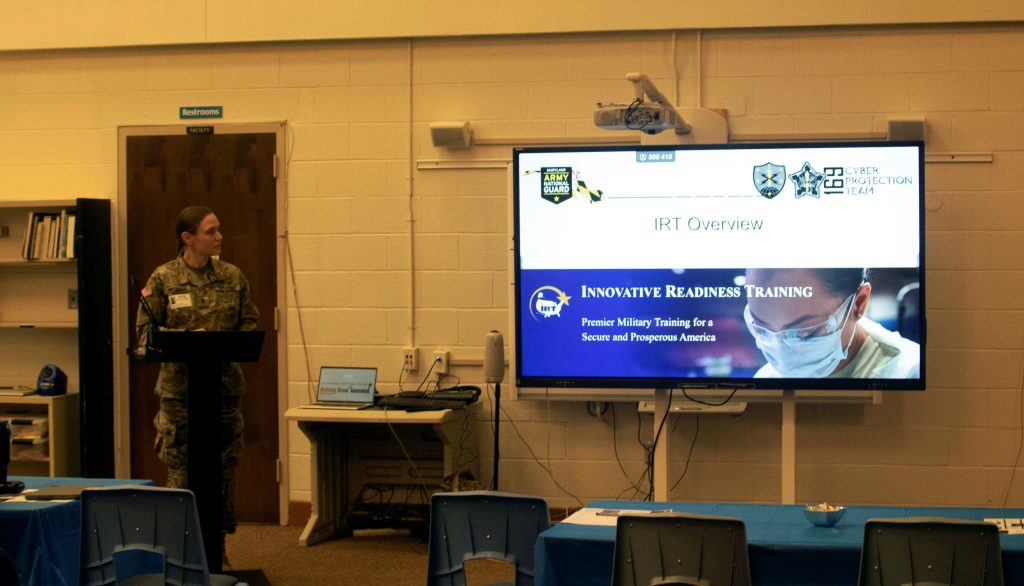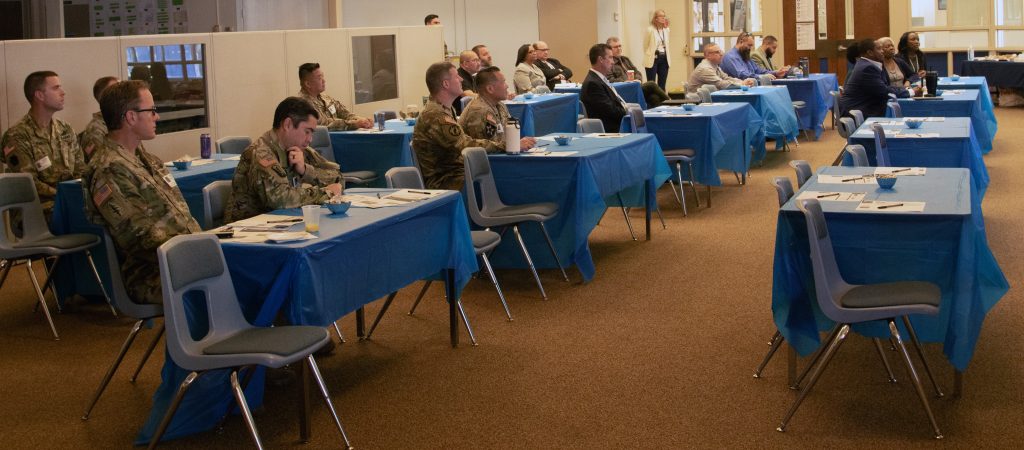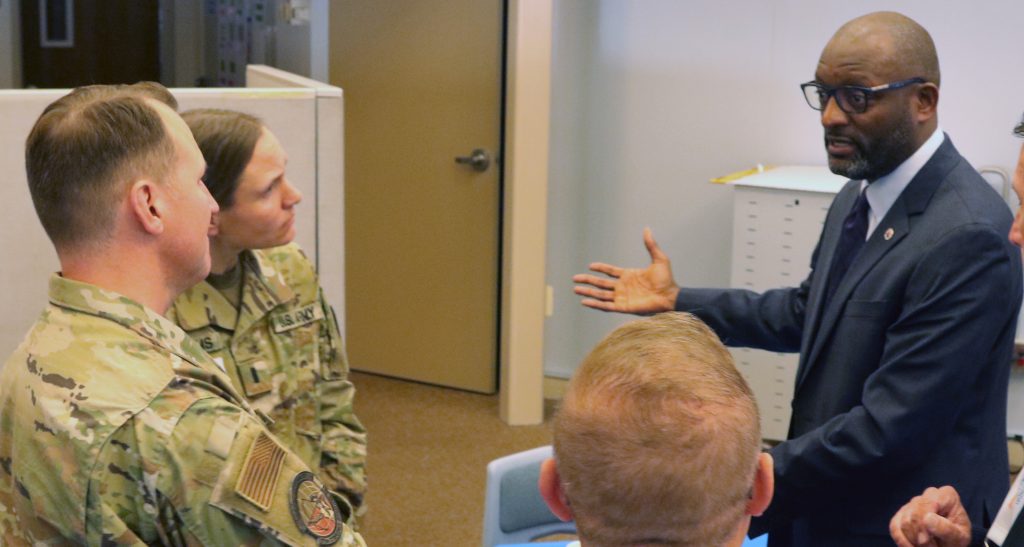Maryland Guard members help enhance Anne Arundel schools cybersecurity

Story by Capt. Mary Lyons
SEVERN, Md. – Maryland National Guard cyber operators spent two weeks assisting Anne Arundel County Public Schools (AACPS) enhance their cybersecurity posture at the Center of Applied Technology – North facility October 14-25, 2024, through the Department of Defense’s Innovative Readiness Training (IRT) Program.
Soldiers from the Cyber Protection Team (CPT) 169 and Airmen from the 275th Cyberspace Operations Squadron (COS) presented discoveries from the engagement and made recommendations to improve AACPS cybersecurity during the training event.
The IRT collaboration was designed to strengthen military readiness while simultaneously enhancing local community resilience.
“It’s a mutually beneficial partnership,” said Maryland Army National Guard 1st Lt. Stephanie Williams, IRT engagement lead assigned to CPT 169. “Our public schools receive essential cybersecurity support, and we, in turn, gain experience not easily replicated in a training environment.”
Anne Arundel County requested the IRT support amid increasing threats to school systems nationwide. In recent years, U.S. educational institutions have seen a surge in cyberattacks targeting sensitive student and staff information. AACPS received advanced cyber protection capabilities at a time when cybersecurity personnel and budgets remain limited.
“I experienced a brutal cyber-attack during my time [as superintendent] in Kansas City where we ultimately had to pay a ransom in order to get back our information,” said Dr. Mark Bedell, superintendent of AACPS. “I learned a lot from that experience, and I am really excited that we have the opportunity to partner with the [Maryland National Guard].”
The exercise focused on strengthening AACPS defenses against potential threats while providing Soldiers and Airmen with hands-on training applicable to incident response events, both domestically and abroad.
CPT 169’s support of Anne Arundel County is part of a broader IRT framework between the Maryland National Guard and AACPS. Originally initiated through the Maryland Air National Guard, the project eventually integrated the Maryland Army National Guard’s CPT 169 to expand capabilities and resources.
“This joint effort between the Army and Air Force demonstrates how we can work together to augment our knowledge, skills, and abilities,” said Williams. “Collaboration across civilian and military professions makes us stronger and better prepared to protect our Maryland communities.”

Anne Arundel County allowed CPT 169 and 275th COS to conduct defensive cyberspace operations on live systems. Unlike simulated exercises, working on an active network introduces
variables that can only be encountered in real-world environments. According to Williams, the intensity and the unique challenges faced enhance unit readiness for future deployments.
“Our work with Anne Arundel County Public Schools provided exposure to systems we might not typically encounter,” said Williams. “It allowed us to refine our processes and improve our readiness. Being able to handle genuine network traffic is invaluable, and our work here could make a difference in future engagements.”
The IRT program helps develop skills essential in combat scenarios while benefiting communities that can benefit from additional resources. For CPT 169, which is responsible for training and qualifying other National Guard cyber protection teams nationwide, this exercise exemplifies how the National Guard can maintain combat readiness while supporting domestic missions.
Williams said their unit’s work is instrumental in reinforcing public trust in government.
“Education is a critical area, especially as cyber actors increasingly target schools,” said Williams. “Our goal is not only to protect the systems we’re working with but to contribute to the safety and security of students and staff. It’s rewarding to directly serve our communities and show the added value we bring beyond traditional military operations.”

